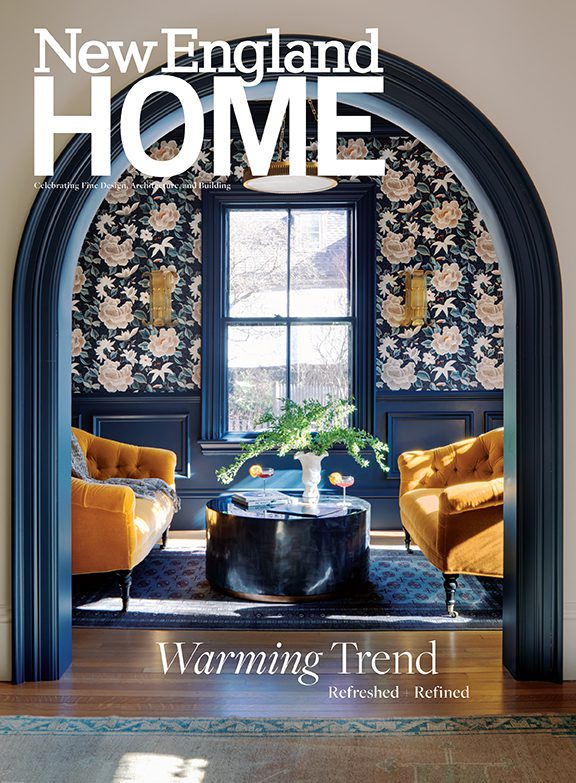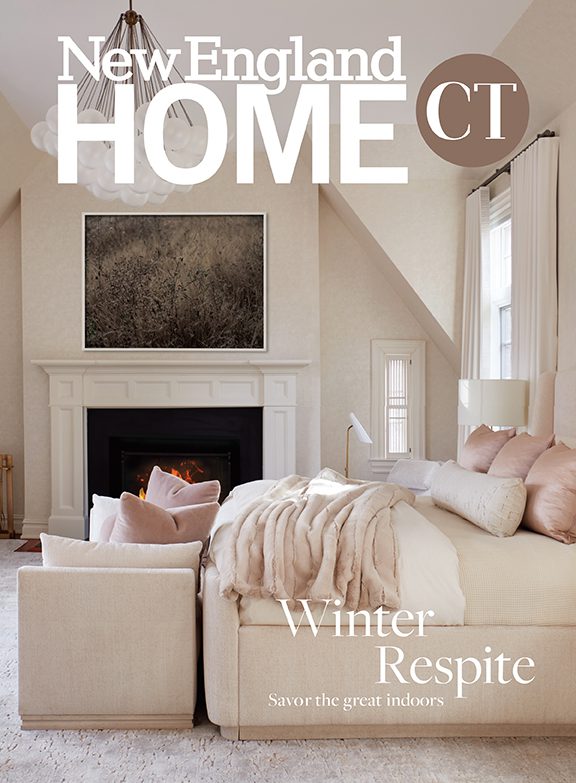Practice Makes Perfect
November 13, 2011
Text by Stacy Kunstel Photography by John Gruen
Patience might be Kristin Gallipoli’s finest decorating virtue. It didn’t matter that the Harvey Probber table in her New Canaan dining room sat chairless for two years. When she finally found the perfect set of ten to go with it, at an auction house in Chicago, she didn’t have to worry about relocating any filler chairs that had held their places.
In fact, that whole “we’ll use this until we find something we like” attitude completely contradicts the designer and store owner’s personal philosophy. “It wasn’t important for me to furnish my home all at once,” she says. “I wasn’t going to buy a bedroom suite or a matching set of living room furniture. It’s like waiting for a guy. It can’t be just any guy; it has to be the right guy. I’m willing to wait, because the perfect thing makes me happy. For me, it’s not necessary to have pieces just to fill the room.”
Gallipoli’s been seeking and finding great things since she was ten, when she started working with her father, who renovated Victorian houses in Providence, Rhode Island. It was her last residence, though—the Philip Johnson–designed Wiley House in New Canaan—that lit her passion for midcentury modern. “I taught myself about midcentury,” she says. “It was like learning to cook. I knew what I liked, but I didn’t know what it was called. I got every catalog from all the modern auction houses and tons of books.” Now she rattles off the provenance of just about any piece as if it were her native tongue.
Gallipoli’s current home is a Cape-style house that she has spent the last three years filling a bit at a time with treasures found through auctions, on eBay, at flea markets and antiques shows, in galleries and local shops. Last year she began channeling her funky-bold taste into a new outlet—her own store, Mason, in downtown New Canaan.
“I wanted to open a store where I would walk in and want everything there,” she says of the collection of design books, midcentury modern furniture and new and vintage accessories. German pottery from the 1960s mingles with Danish coffee tables and low-slung chairs Gallipoli has re-covered in gorgeous linen. She calls the look “glamorous comfort,” and she works to make sure it’s livable. Her two teenage children, she notes, have grown up amid these things.
“In my store, it’s original,” she says of the classic pieces by Henry Bertoia, Niels Moller and other masters of midcentury design, “but I want it to look new. Everything is so pristine. A good part of my day is spent looking. I do all the buying for the store. The store has Kristin written all over it.”
She has since opened another location inside Stamford’s Hamptons Antique Galleries, this one filled with Warren Platner chairs, a Mastercraft console table, a Roche Bobois sofa, modern paintings and plenty of sculpture.
So does she often keep her treasures? “I have to give up a lot,” says Gallipoli. “I stick with what I own—otherwise my house would be a rotating mess. There are hundreds of things that when I’ve sold them I feel like my heart is breaking.”
Still, her house is full of prizes like the round dining table in her square dining room, a Kaare Klint cabinet from the 1950s and those perfect chairs, now covered in a fuchsia fabric by Kravet.
Gallipoli launched her design plan by painting the whole house off-white. Those stark walls became the perfect blank canvas for showcasing her unconventional sensibilities. In a space off the family room, a photograph by Sally Mann hangs above the fireplace between busts of her children that she commissioned from Connecticut artist David Boyajian. Flanking the fireplace are six feet of books wedged into Sapien bookshelves. The living room, dominated by an enormous Buddha and a large Charles Hollis Jones Lucite table covered with a collection of sterling silver boxes, appears staid in comparison with the sunroom and its riot of sunburst colors. On one side of the window-walled room a squash-colored sofa piped in red holds a slew of colorful pillows, including one by Jonathan Adler embroidered with the Studio 54 logo. Two prototype chairs by the Danish designer Hans Wegner sit opposite in an eye-popping David Hicks pattern. A vibrant rug accents the furniture, along with a pair of hot pink Moroccan poufs, which Gallipoli sells at the store in the more subdued shades of white, silver and gold.
“It’s my favorite room,” says Gallipoli. “It’s one place where I just really let color take over. When I said I was going to cover my sofa in orange with red piping, people were like, ‘She’s lost it.’ ”
Other rooms, such as the all-white kitchen and breakfast area and the neutral-hued master suite, stand in serene contrast. In the bedroom, Gallipoli played up the simplicity of the wood-and-metal Eames bed by keeping the bedding sleek. Legless nightstands protrude from the wall while a Curtis Jeré rain sculpture takes flight on the wall above the bed. The simple sheer curtains are the only ones in the house. The iconic hand chair by Pedro Friedeberg was another of her finds.
“My home is not a Pottery Barn, Restoration Hardware home,” says Gallipoli. “It’s important that people fill their homes with things they love. If it doesn’t all go together it doesn’t matter.”
But in corner after corner of her two-story house, things do go together in tidy, magical ways. A trio of elf heads sits at the top of the stairs outside the door of the master bedroom; the vintage Buster Brown sign above them was a steal at $15.
Rooms throughout the house are airy and bright. A ceramic zebra here, a bronze Rodin sculpture there, a smattering of accessories adds just enough interest to keep the spaces warm and lived in, each piece chosen with purpose.
“I don’t like clutter. I like to see what I have,” says Gallipoli. “It’s a mistake to fill your house with furniture instead of things you love.”
Interior design: Kristin Gallipoli
Share
![NEH-Logo_Black[1] NEH-Logo_Black[1]](https://b2915716.smushcdn.com/2915716/wp-content/uploads/2022/08/NEH-Logo_Black1-300x162.jpg?lossy=1&strip=1&webp=1)



















You must be logged in to post a comment.